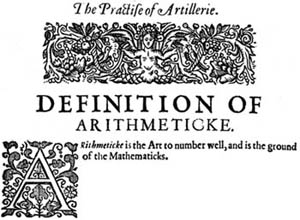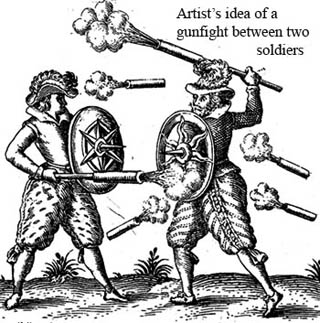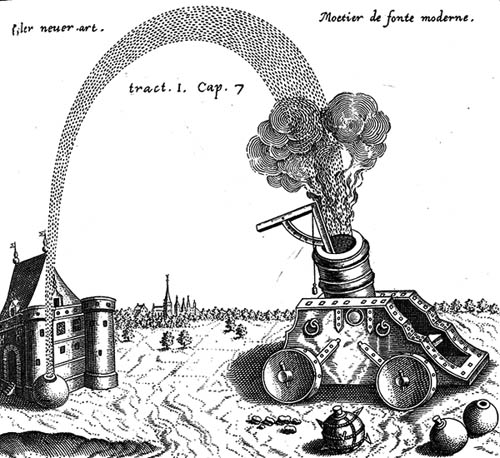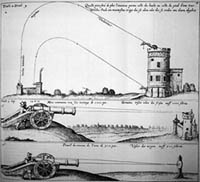What Made Robert Norton Go?
Today, the inner life of an early engineer. The University of Houston's College of Engineering presents this series about the machines that make our civilization run, and the people whose ingenuity created them.
We engineers tell others about the practical utility of what we do. But we tend to keep quiet about the mental pleasure that goes with it - or about our concerns for how our machines will be put to use. Now I find someone who helps explain those inner workings.
He's Robert Norton, born in the late sixteenth century. Norton called himself, "one of his Maiesties Gunners and Enginiers." He studied engineering and gunnery with the royal gunnery master, and was made the lifetime "engineer of the Tower of London," in 1627.
A year later his book The Gunner came out. By then, smoothbore cannons had been serious instruments of war for two centuries. And it was quite clear that one needed mathematics to understand how those guns worked. Norton more than appreciates that fact -- he revels in it. He begins with a set of definitions and theorems, then goes on to call geometry the sinews of artillerie.
 The Arabic algorithms of arithmeticke were just finding their way into European life. So Norton briefly explains how to multiply, divide and extract square roots. There's much on weights and measures and on the geometry of fortification design. And he appends a large set of recipes for appropriate gunpowders.
The Arabic algorithms of arithmeticke were just finding their way into European life. So Norton briefly explains how to multiply, divide and extract square roots. There's much on weights and measures and on the geometry of fortification design. And he appends a large set of recipes for appropriate gunpowders.
The book presents one gaping hole to modern readers. It was written fourteen years before Newton's birth, and one cannot predict trajectories without Newtonian mechanics. Norton sketches paths of shot leaving howitzers, mortars and long range guns and they're clearly not right. Even if we've never studied Newton, we have some idea of projectile paths -- if not from baseballs and footballs, then from TV images of missile trajectories.
 As Norton grooves on the beauty of his guns and gunnery, we can't help but think of the smashed humanity at the other end of his work. Well, so does he. At the outset he says about artillery "... it may ... at first blush seeme to be absolutely contrary to all Christian charity. But ... on the contrary wee come to finde, that Warre is even the Mother and Nurse of Peace."
As Norton grooves on the beauty of his guns and gunnery, we can't help but think of the smashed humanity at the other end of his work. Well, so does he. At the outset he says about artillery "... it may ... at first blush seeme to be absolutely contrary to all Christian charity. But ... on the contrary wee come to finde, that Warre is even the Mother and Nurse of Peace."
That opens up a complicated debate. But Norton expresses a much darker view of the results of his gunnery when he includes his own paraphrase of Italian poet Fracastorius. He writes:
What Horrid Roares proceed from Bombards soules
By Ayre made fire, Torments of lightning flashes
From earth exhald, with vapours: Vulcan howles
For that now on earth men can make thunder dashes,
...
The deuills birds I thinke were fitter names
To call them by, that spit such cruell flames.
Well, those cruell flames pale against what lay ahead. But, for the moment, Robert Norton plied his trade and left us with an almost Freudian record of his own mind at work. Here is the clear conflict between the pleasure his work gave him, and any engineer's concern for what his work might do when it's turned loose.
I'm John Lienhard at the University of Houston, where we're interested in the way inventive minds work.
R. Norton, The Gvnner Shewing the Whole Practice of Artillerie: With All the Appurtenances thereunto Belonging ... (London, Printed by A. F. Humphrey Robinson, Paules Churchyard, 1628). See also, (New York: da Capo Press Theatrum Orbis Terrarum Ltd., 1973 -- facsimile version.)

Norton's conception of a heavy mortar and the path of its projectile.

Click on the thumbnail above for a close look at several of Norton's projectile trajectories.